
Атланта- Самые загруженные аэропорты мира вступают в новую фазу развития инфраструктуры, с несколькими центрами, ориентированными на более чем 100 миллионов пассажиров в год. Ключевые аэропорты, такие как Атланта (ATL), Дубай (DXB) и Токио Ханеда (HND), лидируют в этой трансформации.
От Emirates (EK) в Дубае до Japan Airlines (JL) в Токио Ханеда, авиакомпании и правительства вкладывают значительные средства в пропускную способность аэропортов, гарантируя, что они могут удовлетворить будущий спрос на поездки и глобальные потребности в связи.
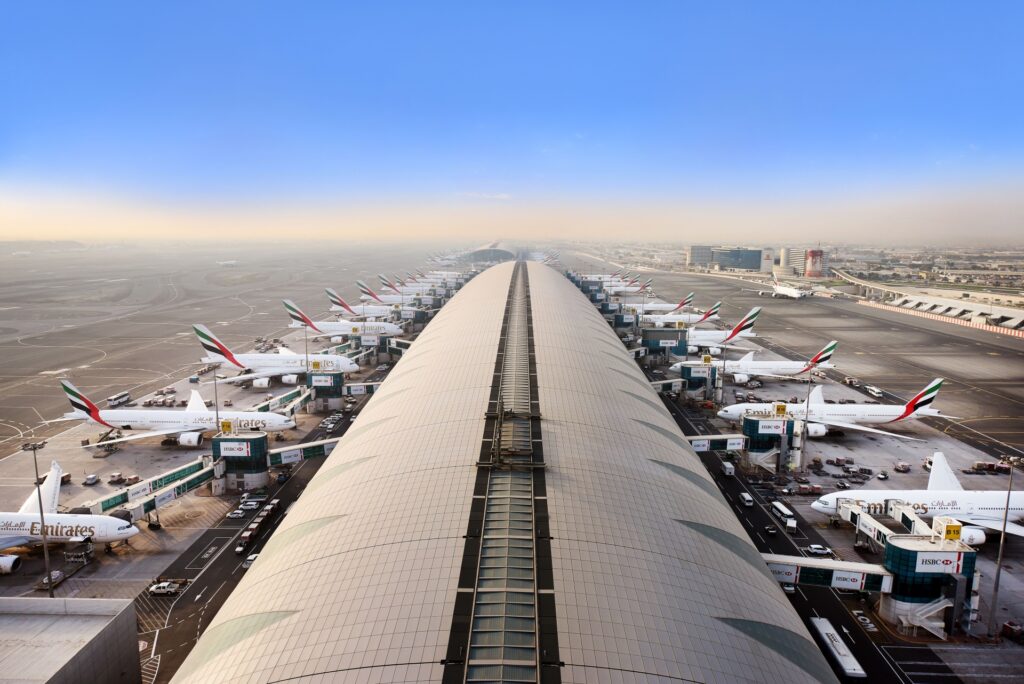 Фото: Международный аэропорт Дубая
Фото: Международный аэропорт ДубаяРасширение аэропорта Мега
Авиационная промышленность переживает исторический инфраструктурный бум, и несколько аэропортов по всему миру расширяют свою деятельность, чтобы присоединиться к элите. Клуб 100 миллионов пассажиров. Этот рост обусловлен сильным постпандемическим восстановлением, бумом международного туризма и национальными стратегиями, которые позиционируют аэропорты как экономические и транзитные центры.
В 2024 году Атланта Хартсфилд-Джексон (ATL) остался единственным аэропортом, который превысил 100 миллионов фактических пассажиров, обработав 108 миллионов.
Dubai International (DXB) внимательно следил за 92,3 миллионами пассажиров, рост составил 6,1% в годовом исчислении, почти вдвое превысив 3,3% ATL. Если эта тенденция сохранится, DXB, вероятно, догонит нас к концу десятилетия.
Вот 10 лучших аэропортов по общей вместимости пассажирских мест (двухсторонний, внутренний + международный) в 2024 году:
| 1 1 | Хартсфилд-Джексон Атланта Интл | ATL | Атланта | Соединенные Штаты Америки | 108M | 125,5 млн. |
| 2 2 | Dubai International | DXB | Дубай | Объединенные Арабские Эмираты | 92,3 М | 120,3 млн. |
| 3 | Токио Ханеда | НД | Токио | Япония | 84.0M | 110,3 мкм |
| 4.4 | Лондонский Хитроу | ЛНР | Лондон | Соединенное Королевство | 83.0M | 103,2 м |
| 5 | Даллас/Форт-Уэрт Интл | DFW | Форт-Уэрт / Fort Worth | Соединенные Штаты Америки | 87.0M | 102,9 мкм |
| 6.6 | Денверский международный | Ден | Денвер | Соединенные Штаты Америки | 82,3 М | 98,4 М |
| 7. | Аэропорт Стамбула | Первый | Стамбул | Тюркие | 80.0M | 96,6 М |
| 8 | Шанхай Пудун | ПВГ | Шанхай | Китай | 76,8 млн. | 95,1 млн. |
| 9 9 | Guangzhou Baiyun Intl | можно | Гуанчжоу | Китай | 76,3 м | 94,9 М |
| 1010 | Чикаго О'Хара | ОРД | Чикаго | Соединенные Штаты Америки | 80.0M | 94.0M |
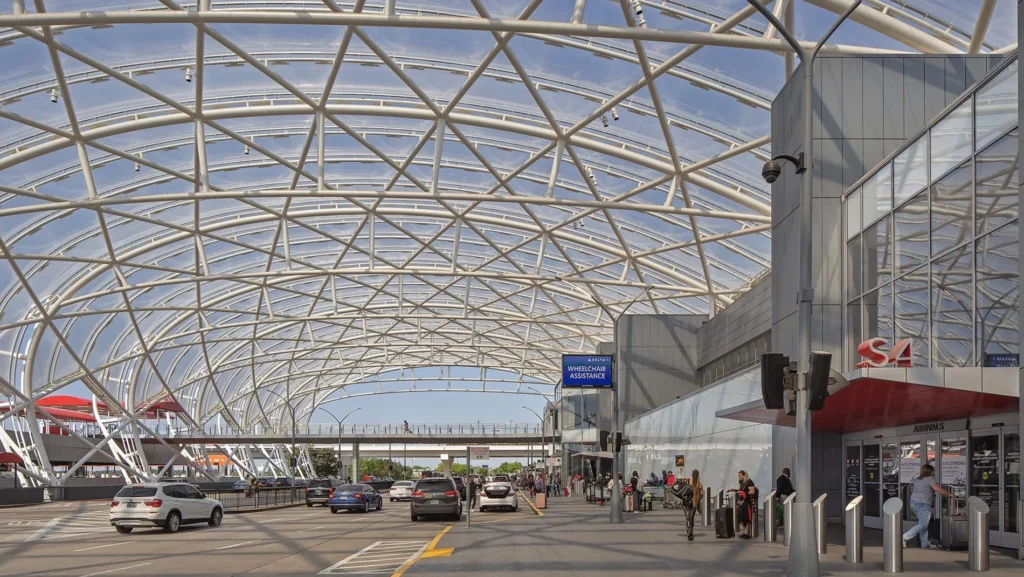 Аэропорт Атланты; Фото: сайт HOK
Аэропорт Атланты; Фото: сайт HOK1. Хартсфилд-Джексон Атланта Интл (ATL)
- Общая вместимость мест125,5 миллионов
- Количество пассажиров108 миллионов
- Страна: Соединенные Штаты
Международный аэропорт Хартсфилд-Джексон Атланта (ATL) остается самым загруженным аэропортом в мире по объему пассажиров.
Являясь основным хабом для Delta Air Lines (DL), ATL использует свое стратегическое расположение в качестве основного внутреннего и международного пункта передачи.
В 2024 году он обслужил 108 миллионов пассажиров, благодаря своей огромной пропускной способности и высокоэффективным операциям.
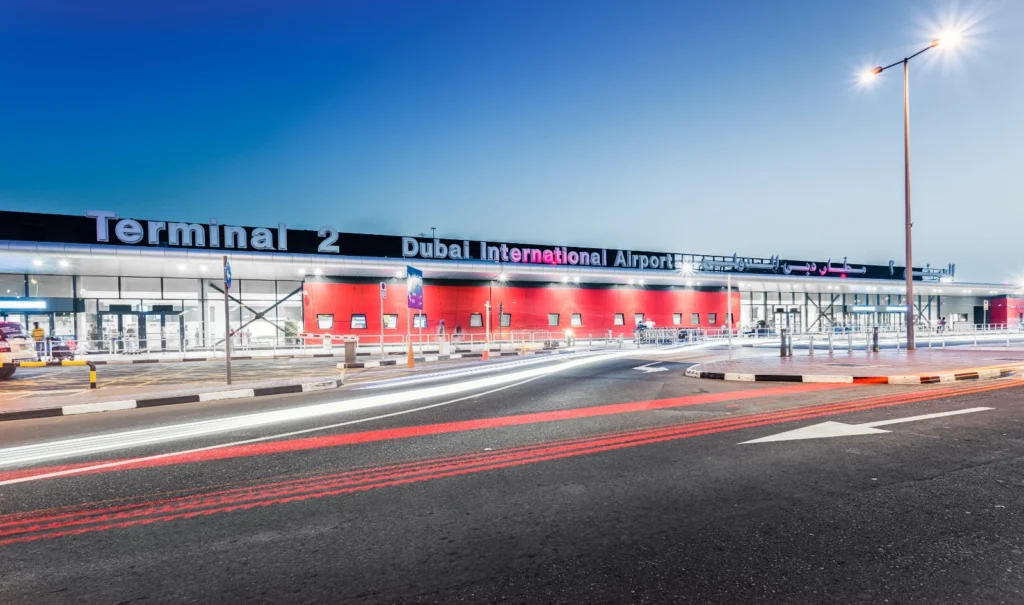 Фото: Международный аэропорт Дубая, Терминал 2
Фото: Международный аэропорт Дубая, Терминал 22. Dubai International (DXB)
- Общая вместимость мест120,3 млн.
- Количество пассажиров92,3 млн.
- СтранаОбъединенные Арабские Эмираты
Международный аэропорт Дубая (DXB) является самым загруженным международным аэропортом в мире и вторым по объему пассажирских перевозок.
Являясь базой для Эмирейтс, DXB предлагает обширную связь между Востоком и Западом. Его пассажиропоток в 92,3 миллиона человек в 2024 году отражает продолжающийся постпандемический рост и высокий мировой спрос на транзит.
 Аэропорт Токио Ханэда; Фото Википедия
Аэропорт Токио Ханэда; Фото Википедия3. Токийская Ханеда (HND)
- Общая вместимость мест110,3 млн.
- Количество пассажиров84,0 млн.
- СтранаЯпония
Токийский аэропорт Ханэда (HND) является основным внутренним и международным аэропортом Японии. Расположенный недалеко от центра Токио, он предлагает высокую эффективность и отличную связь.
В 2024 году HND обслужила 84 миллиона пассажиров, чему способствовал высокий спрос и модернизация инфраструктуры после восстановления туризма в Японии и международного открытия.
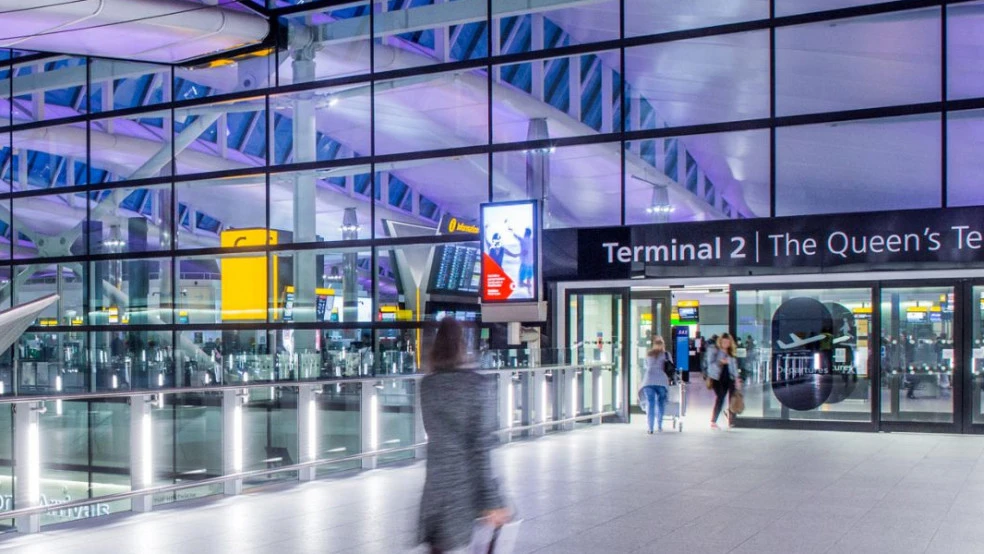 Фото: Skytrax
Фото: Skytrax4. Лондонский Хитроу (LHR)
- Общая вместимость мест103,2 млн.
- Количество пассажиров: 83,0 млн.
- Страна: Соединенное Королевство
Лондонский Хитроу (LHR) по-прежнему является самым загруженным аэропортом в Европе по международным перевозкам. Являясь ключевым хабом для British Airways, он обслужил 83 миллиона пассажиров в 2024 году.
Несмотря на ограниченную пропускную способность взлетно-посадочной полосы, Хитроу эффективно управляет большими объемами и остается жизненно важным для трансатлантических и дальних маршрутов.
 Фото: Международный аэропорт Далласа (DFW)
Фото: Международный аэропорт Далласа (DFW)5. Даллас / Fort Worth Intl (DFW)
- Общая вместимость мест102,9 млн.
- Количество пассажиров: 87,0 млн.
- Страна: Соединенные Штаты
Международный аэропорт Даллас/Форт-Уэрт (DFW) является одним из самых быстрорастущих мега-центров в Северной Америке.
С 87 миллионами пассажиров в 2024 году он служит основной базой для American Airlines и предлагает прочные внутренние и международные связи. Недавние усовершенствования терминалов способствовали дальнейшему росту числа пассажиров.
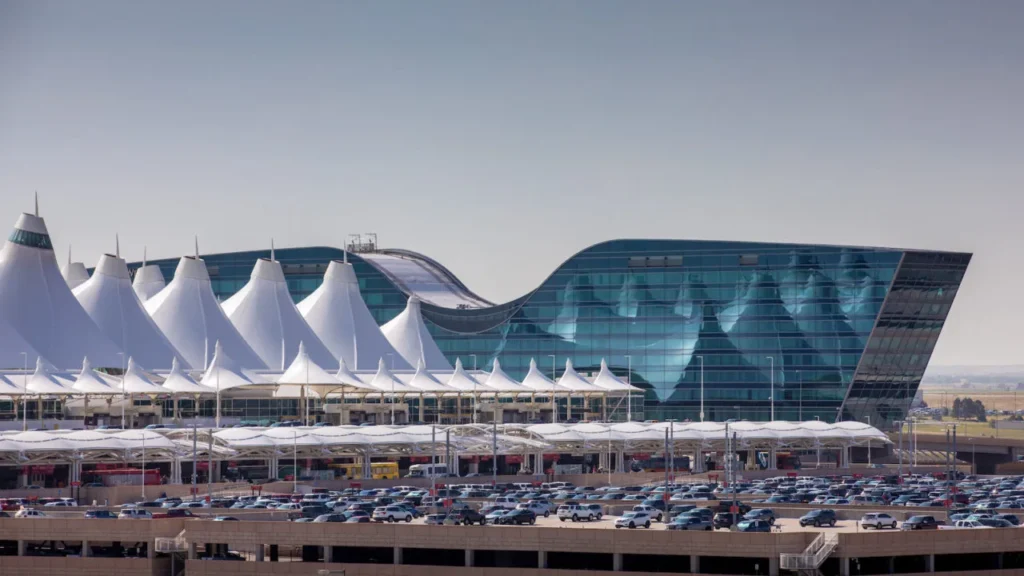 Фото: Международный аэропорт Денвера
Фото: Международный аэропорт Денвера6. Denver International (DEN)
- Общая вместимость мест98,4 млн.
- Количество пассажиров82,3 млн.
- Страна: Соединенные Штаты
Международный аэропорт Денвера (DEN) быстро расширил свою деятельность, заняв шестое место в мире по пассажиропотоку.
С 82,3 миллионами пассажиров в 2024 году DEN пользуется преимуществами своего центрального местоположения в США и служит ключевым центром для United и Southwest Airlines. Планы расширения направлены на увеличение долгосрочных мощностей.
 Фото: аэропорт Стамбула iGA
Фото: аэропорт Стамбула iGAАэропорт Стамбула (IST)
- Общая вместимость мест96,6 млн.
- Количество пассажиров80,0 млн.
- СтранаТюркие
Аэропорт Стамбула (IST) является основным международным шлюзом Тюркие и одним из самых современных аэропортов в мире. Он обслужил 80 миллионов пассажиров в 2024 году и служит важным центром для Turkish Airlines.
Открытый в 2018 году, IST был разработан для масштабируемости, с будущей пропускной способностью, направленной на 200 миллионов пассажиров.
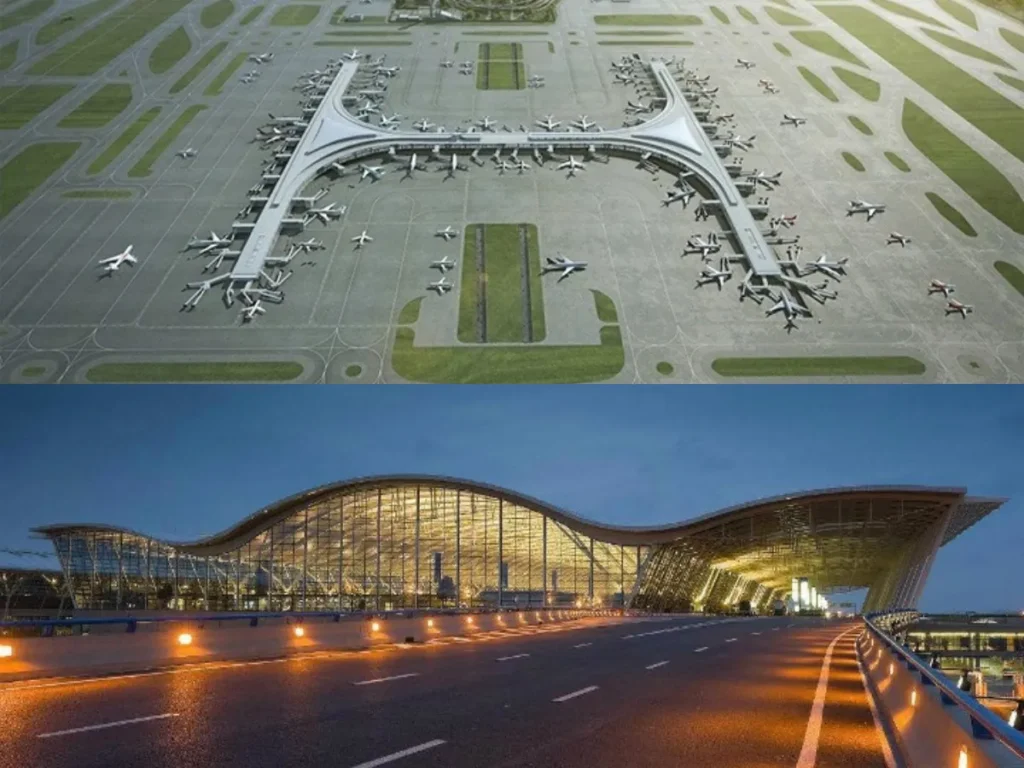 Международный аэропорт Шанхай Пудун; Фото VisitShanghai; Разработчик: Aviation A2Z
Международный аэропорт Шанхай Пудун; Фото VisitShanghai; Разработчик: Aviation A2Z8. Shanghai Pudong (PVG)
- Общая вместимость мест95,1 млн.
- Количество пассажиров76,8 млн.
- СтранаКитай
Шанхайский международный аэропорт Пудун (PVG) остается одним из ведущих мировых центров Китая. С 76,8 миллионами пассажиров в 2024 году PVG поддерживает крупные перевозчики, включая China Eastern, и предлагает обширные международные маршруты.
Его двойной терминал, система двойной взлетно-посадочной полосы продолжает управлять высокой пропускной способностью сидений и пассажиров.
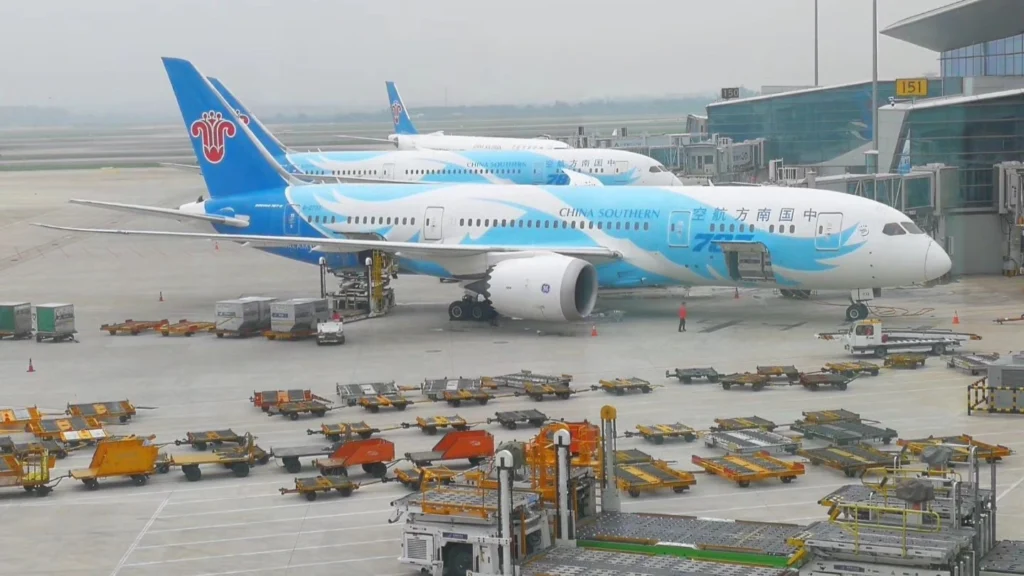 Фото: AirportStudio - Собственная работа, CC BY-SA 4.0, https://commons.wikimedia.org/w/index.php?curid=70087050
Фото: AirportStudio - Собственная работа, CC BY-SA 4.0, https://commons.wikimedia.org/w/index.php?curid=700870509. Guangzhou Baiyun Intl (CAN)
- Общая вместимость мест94,9 млн.
- Количество пассажиров76,3 млн.
- СтранаКитай
Международный аэропорт Гуанчжоу Байюнь (CAN) является центральным центром для южного Китая. В 2024 году он обслужил 76,3 миллиона пассажиров, что отражает восстановление и расширение авиационного рынка Китая.
Благодаря современным терминалам и новой инфраструктуре, CAN позиционируется как крупный Азиатско-Тихоокеанский шлюз.
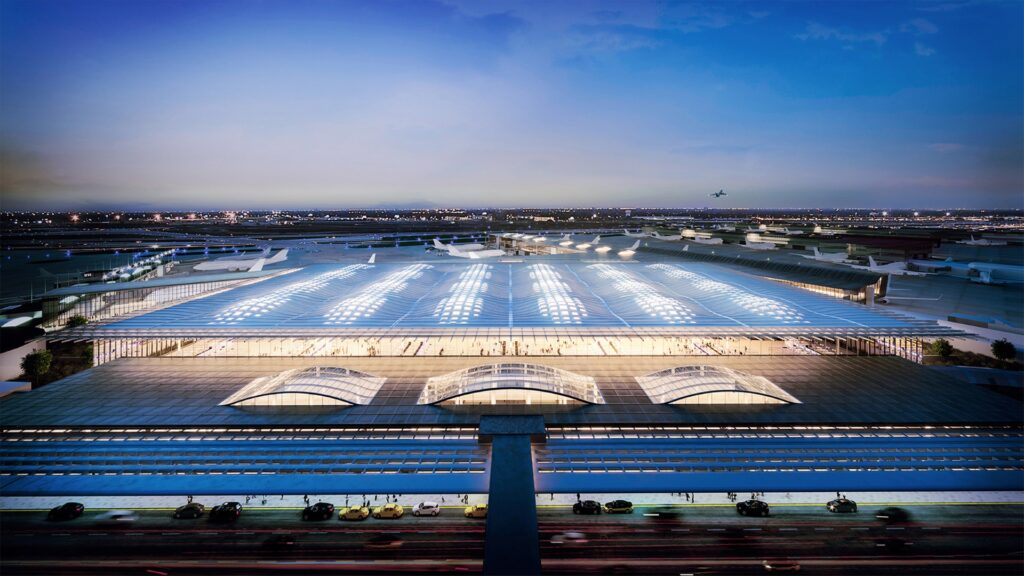 Фото: SOM
Фото: SOM10. Chicago O'Hare (ORD)
- Общая вместимость мест: 94,0 млн.
- Количество пассажиров80,0 млн.
- Страна: Соединенные Штаты
Международный аэропорт Чикаго О'Хара (ORD) является одним из самых связанных центров Америки. Обслуживая 80 миллионов пассажиров в 2024 году, ORD поддерживает крупные авиакомпании, такие как United (UA) и American (AA).
Текущая модернизация терминала и усовершенствование взлетно-посадочной полосы направлены на повышение эффективности и будущего потенциала роста.
 Международный аэропорт имени короля Салмана (X)
Международный аэропорт имени короля Салмана (X)Ближний Восток возглавил атаку
Dubai World Central (DWC)
Dubai World Central (DWC) станет основным центром региона в течение следующего десятилетия. В то время как Dubai International (DXB) продолжает работать, инвестиции в DWC в конечном итоге перенесут сюда основной трафик.
После полного развития DWC будет поддерживать до 260 миллионов пассажиров в год с пятью параллельными взлетно-посадочными полосами, развернутыми в модульных фазах.
Аэропорт Стамбула (IST)
Аэропорт Стамбула (IST) открылся в 2018 году и с тех пор вырос до 80 миллионов пассажиров в 2024 году, что на 5,2% больше, чем в 2023 году.
Его полный план развития нацелен на 200 миллионов пассажиров к 2028 году, позиционируя его как грозный глобальный хаб с крупнейшей маршрутной сетью в регионе.
Международный аэропорт короля Салмана в Эр-Рияде
Видение Саудовской Аравии до 2030 года включает смелую авиационную стратегию. Предстоящий международный аэропорт имени короля Салмана в Эр-Рияде заменит нынешний международный аэропорт имени короля Халида (RUH) и, как ожидается, будет обслуживать 120 миллионов пассажиров к 2030 году и 185 миллионов к 2050 году. В 2024 году РУХ обработал 38 млн пассажиров.
Эти проекты отражают скоординированную региональную стратегию по увеличению пропускной способности аэропортов к 2050 году. Ожидается, что крупнейшие хабы Ближнего Востока будут обслуживать более 750 миллионов пассажиров в год, что более чем в два раза превышает текущие объемы.
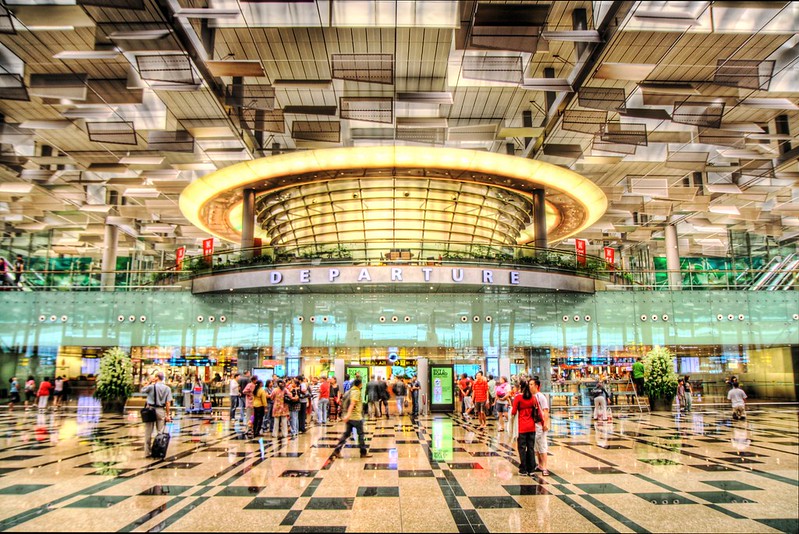 Фото: Лип Джин Ли
Фото: Лип Джин ЛиПроекты развития аэропортов
Сингапурский аэропорт Чанги (SIN)
Строительство терминала 5 аэропорта Чанги (SIN) началось в мае 2025 года, с инвестициями в размере 10 миллиардов долларов для увеличения пропускной способности на 50 миллионов пассажиров, в результате чего к середине 2030-х годов общее количество пассажиров достигло 140 миллионов.
Разработанный Kohn Pedersen Fox и Heatherwick Studio, терминал будет оснащен тремя дополнительными взлетно-посадочными полосами и более 100 выходными воротами.
К 2027 году также планируется расширение третьей взлетно-посадочной полосы для повышения операционной эффективности. Changi (SIN), которая обслужила 67,7 миллиона пассажиров в 2024 году, стремится соединиться с 200 городами по сравнению с 170, укрепляя свою роль в качестве глобального авиационного узла.
 Фото: Международный аэропорт Гонконга
Фото: Международный аэропорт ГонконгаМеждународный аэропорт Гонконга (HKG)
Международный аэропорт Гонконга (HKG) завершает расширение на 18 миллиардов долларов, включая третью взлетно-посадочную полосу, работающую с июля 2022 года, и новый посадочный зал площадью 283 000 квадратных метров, который откроется в июне 2025 года.
Модернизированный Терминал 2 перейдет на терминал обработки полного спектра услуг, увеличивая пропускную способность с 74 миллионов до 104 миллионов пассажиров ежегодно к 2027 году, с долгосрочной целью в 120 миллионов.
Проект включает в себя 2600-метровую автоматизированную систему перемещения людей для улучшения связи.
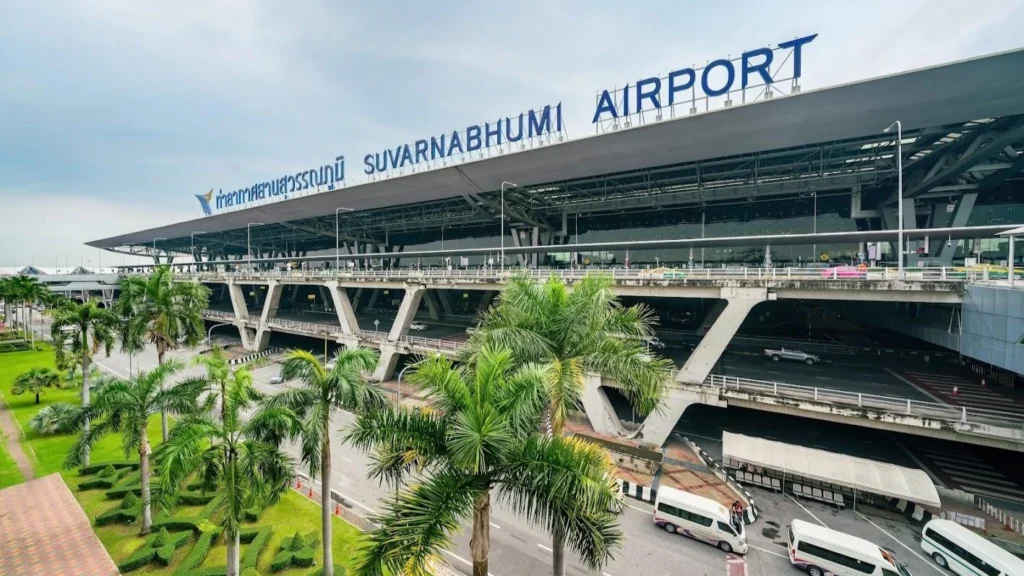 Бангкок Суварнабхуми Международный аэропорт | Фото: Вьетнам Самолет
Бангкок Суварнабхуми Международный аэропорт | Фото: Вьетнам СамолетАэропорт Суварнабхуми (BKK)
Аэропорт Суварнабхуми в Бангкоке (BKK) расширяется с новым Южным терминалом и четвертой взлетно-посадочной полосой, чтобы увеличить пропускную способность с 65 миллионов до 150 миллионов пассажиров к 2033 году.
Этот проект стоимостью 10 миллиардов долларов направлен на то, чтобы позиционировать БКК как региональный трансферный центр, конкурирующий с Сингапуром Чанги (SIN) и Куала-Лумпур Интернешнл (KUL).
Расширение затрагивает растущие туристические и экономические потребности Таиланда, обусловленные такими перевозчиками, как Thai Airways (TG) и Bangkok Airways (PG).
Международный аэропорт Инчхон (ICN)
Международный аэропорт Инчхон в Сеуле (ICN) завершил расширение фазы 4 в декабре 2024 года, добавив четвертую взлетно-посадочную полосу и новую пропускную способность терминала для обслуживания 106 миллионов пассажиров в год, по сравнению с 77 миллионами.
Планы третьего пассажирского терминала и пятой взлетно-посадочной полосы пересматриваются для поддержки бюджетных перевозчиков, таких как T'way Air (TW) и Jeju Air (7C).
Стратегическое расположение ICN делает его ключевым центром для таких авиакомпаний, как Korean Air (KE) и Asiana Airlines (OZ).
Международный аэропорт Лонг Тхань (LTI)
Вьетнамский международный аэропорт Лонг Тхань (LTI), строящийся недалеко от Хошимина, представляет собой проект стоимостью 20 миллиардов долларов, предназначенный для обслуживания 100 миллионов пассажиров и 5 миллионов тонн грузов к 2050 году.
Фаза 1, которая должна быть завершена к 2026 году, будет включать в себя одну взлетно-посадочную полосу и терминал с пропускной способностью 25 миллионов пассажиров, снимая давление на Tan Son Nhat (SGN).
Последующие этапы к 2035 и 2050 году добавят взлетно-посадочные полосы и терминалы, позиционируя LTI как глобальный мегахаб для таких перевозчиков, как Vietnam Airlines (VN).
Международный аэропорт Новая Манила (Булакан)
Международный Новый Манила Аэропорт в Булакане, Филиппины, является проектом стоимостью 14 миллиардов долларов, возглавляемым корпорацией Сан-Мигель.
Он будет открываться поэтапно с 2026 года и первоначально будет обслуживать 35 миллионов пассажиров, а по завершении к 2030 году — 100 миллионов.
Аэропорт площадью 2500 гектаров будет оснащен четырьмя взлетно-посадочными полосами, что облегчит заторы в Ниной Акино (MNL) и Кларк Интернешнл (CRK). Ожидается, что Philippine Airlines (PR) и Cebu Pacific (5J) будут использовать этот новый хаб.
Другие известные проекты
- Beijing Daxing International (PKX)Планы расширения направлены на снижение давления на Beijing Capital (PEK), с акцентом на увеличение пропускной способности для China Southern Airlines (CZ) и China Eastern Airlines (MU).
- Международный аэропорт Нойда (Джевар, Индия): Этот проект стоимостью 4 миллиарда долларов, который откроется в сентябре 2025 года, первоначально будет обслуживать 12 миллионов пассажиров, а к 2040 году увеличится до 70 миллионов, поддерживая такие перевозчики, как IndiGo (6E) и Air India (AI).
- Международный Куала-Лумпур (KUL)Расширение на 350 миллионов долларов увеличит пропускную способность более чем до 100 миллионов пассажиров, позиционируя KUL как хаб для Malaysia Airlines (MH) и AirAsia (AK).
 Фото: Дэвид МакКелви | Flickr
Фото: Дэвид МакКелви | FlickrНижняя линия
К 2030-м годам аэропорты Азии будут доминировать в 100-миллионном пассажирском клубе, что будет обусловлено быстрой урбанизацией и ростом среднего класса.
Благодаря инвестициям в размере 240 миллиардов долларов, запланированным до 2035 года, такие хабы, как Чанги (SIN), Инчхон (ICN) и Лонг Тхань (LTI), переопределят глобальную авиацию, бросив вызов доминированию аэропортов, таких как Атланта (ATL) и Дубай (DXB).
Ориентация региона на более умные, крупные и подключенные аэропорты гарантирует, что он будет соответствовать прогнозируемому росту пассажиропотока на 7,9% в ближайшей перспективе, закрепляя Азиатско-Тихоокеанский регион в качестве эпицентра авиационных инноваций.
Оставайтесь с нами. Следуйте за нами в социальных сетях для последних обновлений.
Присоединяйтесь к нам в Telegram Group для последних обновлений авиации. Следуйте за нами в Google News
Самые красивые терминалы в мире к 2025 году
Топ-10 аэропортов, способных обрабатывать 100 миллионов пакс в мире, впервые появился на Aviation A2Z.








![W "Piątce" wiedzą, iż bezpieczeństwo to podstawa! [ZDJĘCIA]](https://www.eostroleka.pl/luba/dane/pliki/zdjecia/2025/557735075_1431347902326116_6686935248664708856_n.jpg)







